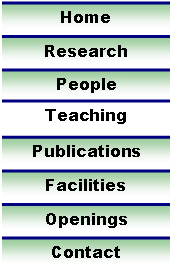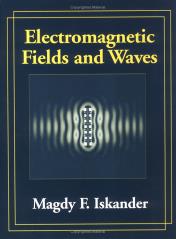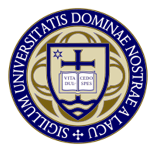




|
Teaching |
|
Microwave and THz Circuits, Components and Systems (Spring 2012)
EE 47013-01 (also EE 67047), 3 credits Instructor: Dr. Lei Liu Class hours: TR 3:30-4:45 pm Class location: Cushing 116
Class Description: In this class we explore the theory, design and analysis of microwave/THz passive and active circuits, components and systems. The theory and techniques covered in this class can be applied to high speed circuits with operation frequencies up to terahertz (THz) region. Topics include transmission line theory, advanced EM theorems and principles (e.g. image theory, the equivalence principle), typical waveguides (e.g. microstrip, CPW, rectangular metal waveguide), microwave network analysis, passive circuits and components (couplers, resonators, filters), antennas, active circuits and systems (detectors, mixers, receivers, amplifiers and oscillators), and finally an overview of millimeter-wave and THz techniques (multipliers, transceivers and quasi-optical techniques).
Class Syllabus:
Introduction and motivation Review of transmission line theory Advanced EM theorems and principles Typical waveguides and applications Microwave network analysis RF, microwave passive circuits and components Directional couplers Microwave resonators Microwave filters Antennas RF, microwave active circuits and systems Direct detectors (or video detectors) Mixers and receivers Amplifiers and oscillators Overview of millimeter-wave and THz techniques Sources and multipliers (solid-state sources) THz direct and heterodyne (mixing) detection Quasi-optical techniques THz systems and applications
Reference: David M. Pozar, “Microwave Engineering” R. F. Harrington, “Time-Harmonic Electromagnetic Fields” C. A. Balanis, “Antenna Theory”
Preferred prerequisites: EE40458 Microwave Circuits Design and Measurement
Electromagnetic Fields and Waves: II (Spring 2013) Instructor: Dr. Lei Liu Class hours: TBD Class location: TBD
Waveguides and Antennas (Spring 2014) Instructor: Dr. Lei Liu Class hours: TBD Class location: TBD
Class Description: In this class we explore the fundamental theories and techniques for high-frequency circuit design and analysis. The propagation characteristics of electromagnetic waves in typical transmission lines (i.e. unbounded region with dielectric interface, TEM mode in ideal transmission lines, rectangular waveguides) are discussed followed by introduction of radiation from antennas and antenna arrays. The theory and techniques covered in this class can be applied to high-speed circuits with operation frequencies up to terahertz (THz) region. Topics in this class include transmission line theory, Smith charts, impedance matching, typical waveguides (e.g. microstrip, CPW, rectangular metal waveguide), antennas and antenna arrays.
Objectives: By the end of the course, the student should be able to:
Apply EM theory to analyze plane wave transmission and reflection (normal and oblique incident) at dielectric interface. Understand EM wave propagation characteristics in typical transmission lines (waveguides). Solve typical impedance matching and basic microwave circuit design problems using transmission line theory and Smith chart. Understand radiation mechanisms and properties for typical antennas and antenna arrays. Design basic waveguide circuits and simple antennas and antenna arrays.
Class Syllabus: (26-28 lectures)
Introduction and Motivation (Circuits and Electromagnetics, Waveguides and Antennas) (1) Normal Incidence Plane Wave Transmission and Reflection at Dielectric Interfaces (Chap. 5) (4 Lectures)) Oblique Incidence Plane Wave Transmission and Reflection (Chap. 6) (3 Lectures) Transmission Lines Theory and Techniques (Chap. 7) (7-9 Lectures) Typical Transmission Lines and Rectangular Waveguides (Chap. 8) (4 Lectures) Antennas and Antenna Arrays (4-6 Lectures)
Total 24-26 Lectures, 2 Midterms, and 1-2 Lab Tours/Demo.
Reference: Class Notes and Reading Materials Magdy F. Iskander, “Electromagnetic Fields and Waves” David M. Pozar, “Microwave Engineering” C. A. Balanis, “Antenna Theory”
Useful Links: Microwave 101
Grading:
50% homework; 20% midterm; 30% final exam.
Honor code: Notre Dame students are expected to abide by Academic Code of Honor Pledge. “As a member of the Notre Dame community, I will not participate in or tolerate academic dishonesty.” Students may collaboratively discuss course assignments but are expected to write and complete their own assignment papers independently.
Finally, academic integrity is required. We will not tolerate academic dishonesty in any form. The University’s Honor Code (http://honorcode.nd.edu/) reminds our community of our shared purpose both within the institute of academia and as members of a broader humanity; the statement also outlines policy violation procedures. Any questions regarding academic integrity, particularly regarding assignments in this course, should be directed to the instructor or TA.
Attendance at classes and lessons: An attendance policy is required as part of all course syllabi. The following statement comes from the University catalog:
“Students are expected to attend all classes and lessons. Attendance requirements will be stated in the syllabus. Private lessons missed for any cause other than illness may not be made up. Lessons missed because of illness may be made up provided the instructor is given due notice. Each instructor keeps a record of attendance for all his/her classes. Excessive absences should be reported to the Office of the Dean.”
|
|
Courses: |




|
THz Circuits and Systems Lab |
